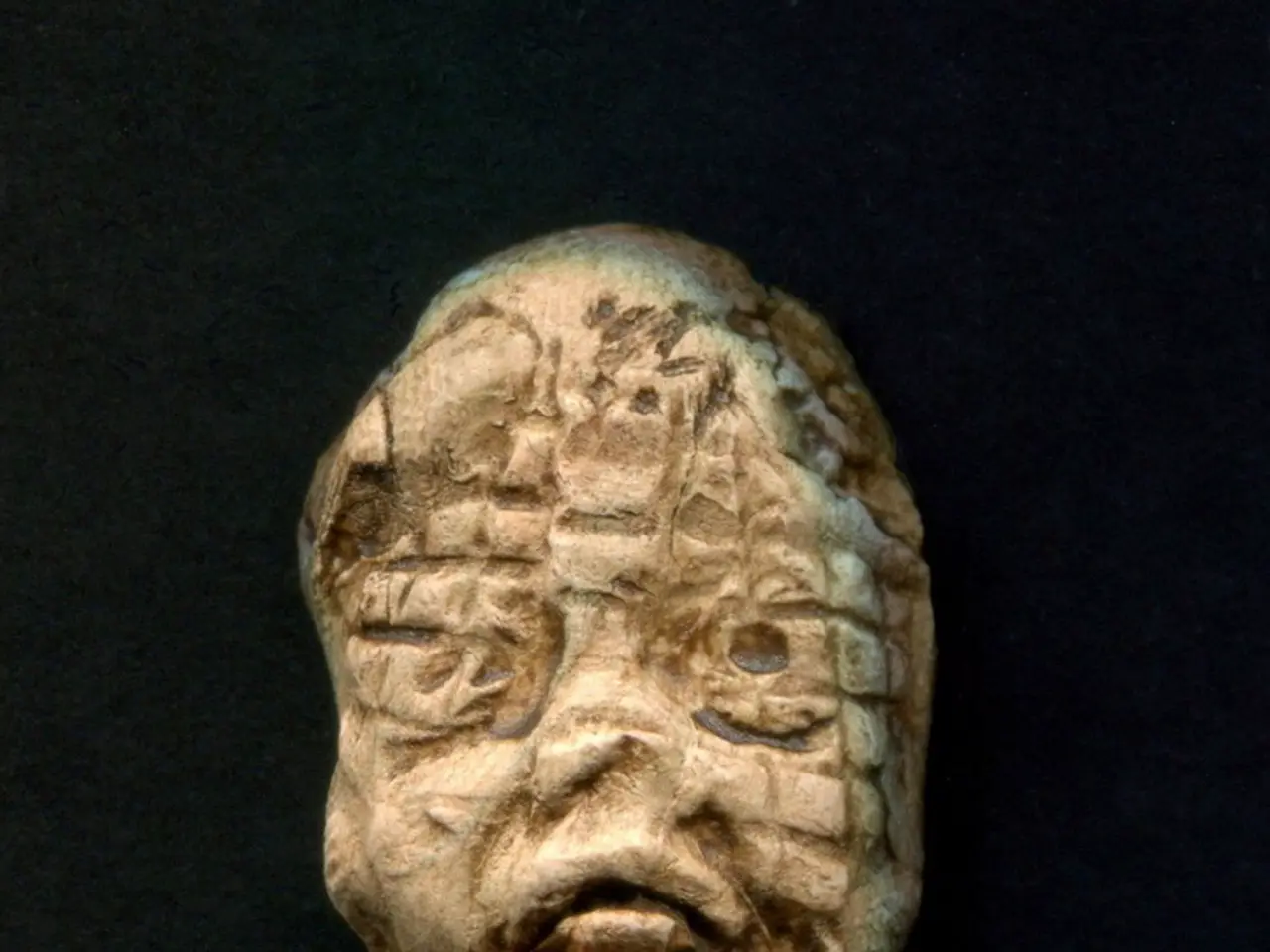California-Sourced Gems: The Benitoite Stone
In the heart of San Benito County, California, nestled near the headwaters of the San Benito River, a unique gemstone was unearthed in 1907. This gemstone, named benitoite, would captivate the world with its striking blue hue and intriguing origins.
The name 'benitoite' was officially bestowed upon the gemstone on July 30, 1907, by Associate Professor of Geology at the University of California, Berkeley, Davis Louderback. Initially, its identity was uncertain, with experts speculating it might be volcanic glass, spinel, or sapphire due to its vivid blue color. However, further analysis revealed its unique optical properties, establishing benitoite as a previously unknown gemstone.
Geologically, benitoite is a rare barium titanium silicate mineral (BaTiSi3O9) that forms in hydrothermally altered serpentinite within the region's unique geological environment. The gem-quality crystals of benitoite have only been found in this area of California. Its formation is linked to hydrothermal processes where hot fluids interact with surrounding rocks, creating the conditions for benitoite crystals to grow, typically associated with other minerals like natrolite and neptunite.
The discovery of benitoite occurred in the New Idria district, the only known location that has produced facet grade benitoite. The Benitoite Gem Mine, one of two mines in the New Idria district, was the only one to produce faceted material in commercial quantity. The mine operated from 1907-2005 under several different names and owners. In 2005, the Benitoite Gem Mine was reclaimed and is now open as a small pay-to-dig operation.
Benitoite can come in a beautiful range of colours from blue to slightly purplish-blue, or white to colourless, with very few stones being naturally pink. Most stones are not treated in any way, but an orange colour can be caused in some stones through heat treatment. Crystals are typically smaller than one centimetre with many of them being highly included. The benitoite usually forms where the veins narrow or terminate and is always coated by natrolite.
Out of less than 10 known locations worldwide, only three are outside of California (Japan, Australia, and Arkansas, USA). The syenite intrusion in the southern portion of the serpentinite body caused hydrothermal alteration in localised areas, leading to the formation of benitoite.
In summary, benitoite's historical significance lies in its discovery in 1907 California and its recognition as a unique gemstone, while geologically, it forms through localized hydrothermal activity in a rare geochemical environment, producing its distinctive blue crystals only found in San Benito County. The gemstone's all-American origins and its rarity make it a prized possession for gemstone collectors worldwide.
[1] Geology of Benitoite: https://www.mindat.org/min-13403.html [2] The Geology of California: https://www.calgeo.org/resources/publications/geology-california-fifth-edition/
- The unique gemstone, benitoite, discovered in San Benito County, California in 1907, captivated the world and sparked a need for research and education in gemmology.
- Associate Professor of Geology at the University of California, Berkeley, Davis Louderback, officially named benitoite on July 30, 1907, recognizing its unique optical properties that set it apart as a previously unknown gemstone.
- Pursuing education in gemmology, science, and geology would provide an understanding of the origins of benitoite, a rare barium titanium silicate mineral, and its formation through localized hydrothermal activity.
- Upon completion of gemmology courses and diploma programs, one could gain a deeper appreciation for the rarity of benitoite and the significance of its all-American history, making it a valuable addition to any education-and-self-development portfolio.




